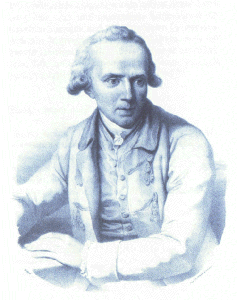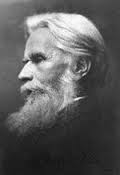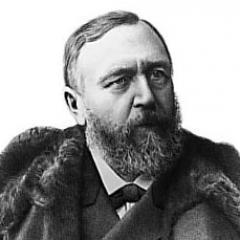Sex has always been a hot topic. Even during eras in history we tend to think of as being pretty sexless, there were experts happy to fill the public in on human sexuality. For the most part, these sexual experts – commonly called sexperts – simply wanted to promote a healthier approach to human sexuality. Some, on the other hand, had some strange habits and even stranger ideas that casts a new light on some of their advice.
Samuel Auguste Tissot
 Even if you don’t recognize the name, you know the legacy of Samuel Auguste Tissot. During the 18th Century, Tissot was the most well-known physician throughout Europe. He was invited to work with the Vatican and regularly published works on a host of medical breakthroughs. Tissot, however, had one area where he simply couldn’t be objective – and that was the realm of masturbation. Tissot is almost single-handedly responsible for the prevailing myths about masturbation causing blindness, madness and even death. His 1760 work L’Onanisme was little more than a laundry list of maladies which could allegedly be caused by masturbation. Tissot claims he compiled the list from his own observations as a physician, debate continues about his single minded obsession with self love.
Even if you don’t recognize the name, you know the legacy of Samuel Auguste Tissot. During the 18th Century, Tissot was the most well-known physician throughout Europe. He was invited to work with the Vatican and regularly published works on a host of medical breakthroughs. Tissot, however, had one area where he simply couldn’t be objective – and that was the realm of masturbation. Tissot is almost single-handedly responsible for the prevailing myths about masturbation causing blindness, madness and even death. His 1760 work L’Onanisme was little more than a laundry list of maladies which could allegedly be caused by masturbation. Tissot claims he compiled the list from his own observations as a physician, debate continues about his single minded obsession with self love.
Havelock Ellis
 Havelock Ellis is one of the earliest known sexperts and was the first to write about homosexuality in a rational way. He wrote extensively on the subject of human sexuality in spite of the fact that he remained a virgin until he married in his early 30s. His marriage wasn’t exactly steeped in passion, however. Ellis married Edith Lees, an English writer, advocate for women’s rights and public lesbian. The pair married in 1891, went on their honeymoon and then each went back to their respective lives. Ellis moved back to the same rooms he had lived in as a bachelor and carried on with his work as an author on human sexuality. Ellis also suffered from impotence throughout his life and discovered at the ripe old age of 60 that he could be turned on by watching women urinate.
Havelock Ellis is one of the earliest known sexperts and was the first to write about homosexuality in a rational way. He wrote extensively on the subject of human sexuality in spite of the fact that he remained a virgin until he married in his early 30s. His marriage wasn’t exactly steeped in passion, however. Ellis married Edith Lees, an English writer, advocate for women’s rights and public lesbian. The pair married in 1891, went on their honeymoon and then each went back to their respective lives. Ellis moved back to the same rooms he had lived in as a bachelor and carried on with his work as an author on human sexuality. Ellis also suffered from impotence throughout his life and discovered at the ripe old age of 60 that he could be turned on by watching women urinate.
Richard Freiherr von Krafft-Ebing
 When most people think about sexually repressive periods in history, the Victorian Age is often the first that comes to mind. While Victorians may be remembered for their sexual repression, under that image of propriety there was a cauldron of sexual appetites. Richard Freiherr von Krafft-Ebing was a noted psychiatrist at the time with a keen interest in human sexuality. He published his infamous book, Psychopathia Sexualis, in 1886. He chose the name specifically for its medical sound, thinking it would prevent the book from achieving any popularity with the public. But he couldn’t have been more wrong. The book chronicles case histories of people running the gamut from simple masturbation to extreme forms of sadomasochism. The book brought to light sexual fetishes most people hadn’t even known existed and has since been revised and updated more than a dozen times.
When most people think about sexually repressive periods in history, the Victorian Age is often the first that comes to mind. While Victorians may be remembered for their sexual repression, under that image of propriety there was a cauldron of sexual appetites. Richard Freiherr von Krafft-Ebing was a noted psychiatrist at the time with a keen interest in human sexuality. He published his infamous book, Psychopathia Sexualis, in 1886. He chose the name specifically for its medical sound, thinking it would prevent the book from achieving any popularity with the public. But he couldn’t have been more wrong. The book chronicles case histories of people running the gamut from simple masturbation to extreme forms of sadomasochism. The book brought to light sexual fetishes most people hadn’t even known existed and has since been revised and updated more than a dozen times.
These experts from history shaped the landscape of human sexuality in a way that is still felt today. But for all their influence, we now see just how jaded, skewed and downright dangerous some of their thinking was. Tissot, for example, may have thought masturbation was the work of the Devil himself but today we know that masturbation promotes better sexual health in both men and women. Several of the sexual deviancies catalogued by von Krafft-Ebing are now seen as little more than personal preference. Meanwhile, Havelock Ellis remained one of the most progressive thinkers of his time, and yet he struggled with his own sexual satisfaction. These stories reassure us that even the experts can get it wrong and that no matter how sure the experts are, it’s worth finding out what they get up to when the lights go out










